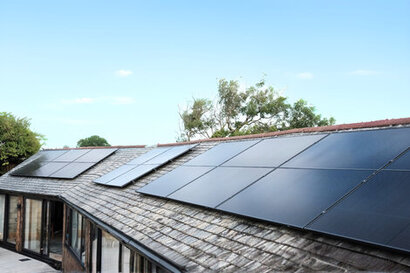
According to the latest figures, domestic rooftop solar capacity has increased by 58.3 percent over the last five years, from 3.5 GW in 2021 to 5.6 GW in 2025. By comparison, commercial and industrial rooftop solar capacity grew by 18.6 percent over the same period, from 10.6 GW to 12.6 GW.
More than 1.54 million UK households now have solar panels installed - an increase of over half a million since 2021. This rising momentum means domestic solar now accounts for 30.5 percent of the UK’s total rooftop solar capacity, up from 24.8 percent in 2021.
The government’s upcoming policy mandating rooftop solar on all new-build homes from 2027 (as part of the broader Future Homes Standard regulations) is expected to further accelerate domestic uptake of solar - a move Gryd welcomes.
However, while the number of domestic installations is growing significantly, the average size of home solar systems has decreased from about 4kWp in 2023 to 2.4kWp in 2024.
“UK homeowners are leading a quiet energy revolution” said Mohamed Gaafar, CEO and Co-Founder of Gryd. “Rooftop solar is no longer a niche feature on a home - it’s becoming the new normal. But we need to pay close attention to how it’s being deployed. The technology only continues to get cheaper and more efficient, meaning homeowners should be able to benefit from more solar, not less - particularly as many homes have increased electrical demand from heat pumps and electric vehicles. But housebuilders are under pressure to deliver low-carbon homes at scale, causing many to install the minimum viable solar systems to meet current building regulations - often as little as 3-4 panels, equivalent to 1-1.6kWp. In contrast, when homeowners install solar themselves, they typically choose systems around 4kWp or larger to better match their energy needs. Deploying undersized systems at scale risks locking in inefficiency for decades - and retrofitting larger systems in 5-10 years down the line is far more expensive and complex than simply doing it right the first time.”
Gryd is already working with developers across the country to deploy optimally-sized solar and battery storage systems in their new-build developments. Their buyers will benefit from lower bills, greener energy and future-ready infrastructure from the day they move in. Gryd believes this should be the new normal in the residential energy market and the company is urging the government to amplify this vision by being as ambitious as possible in its mandatory solar requirements for new homes.
“If the right guardrails aren’t in place, we risk building a generation of underpowered homes that underserves homeowners’ energy needs” added Mr Gaafar. “The solar revolution is here. Let’s not sell it short.”
For additional information:

